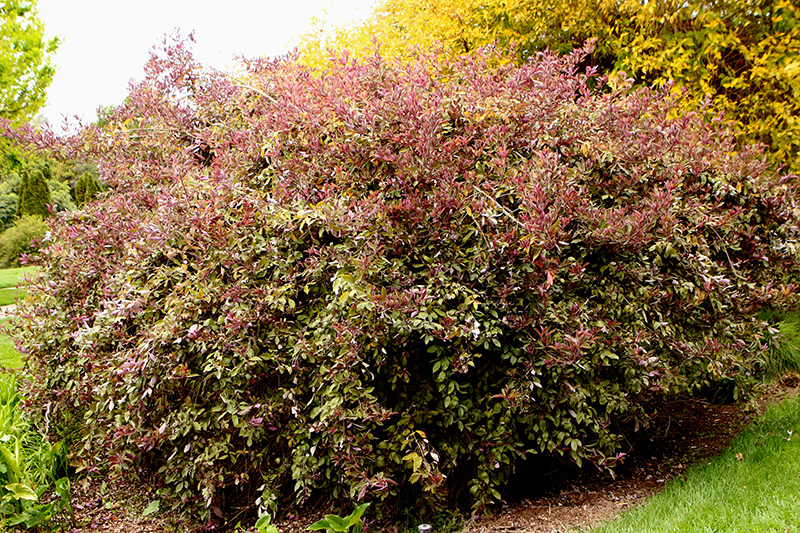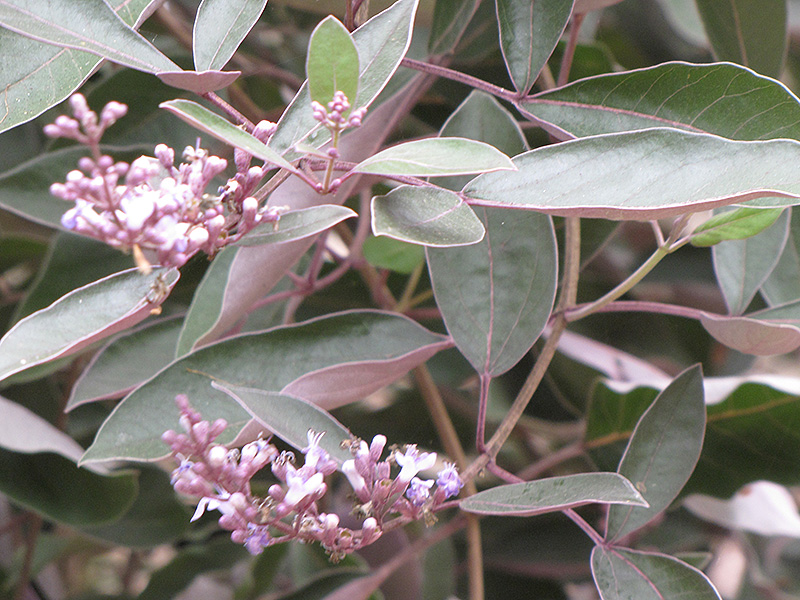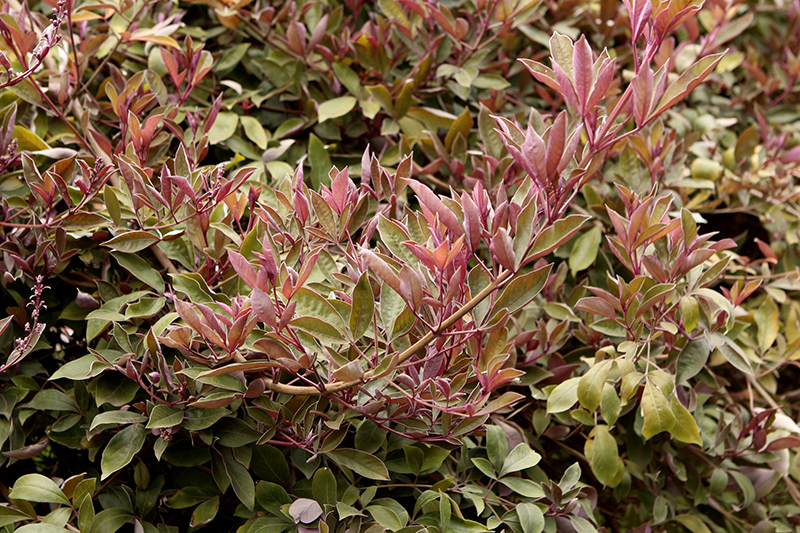Height: 18 feet Spread: 15 feet
Sunlight:
Hardiness Zone: 8b Other Names: Trifoliate Chastetree, Simpleleaf Chastetree Description: A large shrub featuring aromatic foliage that emerges reddish-purple and turns gray-green with purple undersides; lavender flowers produced most abundantly in mid-summer, followed by black berries; a great tall hedge or screen, or prune as a small tree Ornamental Features Arabian Lilac has panicles of fragrant lavender flowers rising above the foliage from early spring to late fall. It has grayish green foliage with lavender undersides which emerges purple in spring. The fragrant compound leaves remain grayish green throughout the winter. It produces black berries in late summer. Landscape Attributes Arabian Lilac is an open multi-stemmed evergreen shrub with an upright spreading habit of growth. Its relatively fine texture sets it apart from other landscape plants with less refined foliage. This shrub will require occasional maintenance and upkeep, and is best pruned in late winter once the threat of extreme cold has passed. It is a good choice for attracting butterflies to your yard. It has no significant negative characteristics. Arabian Lilac is recommended for the following landscape applications; Planting & Growing Arabian Lilac will grow to be about 18 feet tall at maturity, with a spread of 15 feet. It has a low canopy with a typical clearance of 1 foot from the ground, and is suitable for planting under power lines. It grows at a fast rate, and under ideal conditions can be expected to live for 50 years or more. This shrub does best in full sun to partial shade. It is very adaptable to both dry and moist locations, and should do just fine under average home landscape conditions. It is considered to be drought-tolerant, and thus makes an ideal choice for xeriscaping or the moisture-conserving landscape. It is not particular as to soil type or pH, and is able to handle environmental salt. It is highly tolerant of urban pollution and will even thrive in inner city environments, and will benefit from being planted in a relatively sheltered location. This is a selected variety of a species not originally from North America.![]()
![]()
![]()
![]()
![]()
![]()
![]()
![]()
![]()
![]()
![]()
![]()
![]()
top of page
Louie's Nursery Menifee - Plant Finder
Characteristics
Applications
Features & Attributes
This tool is an online resource representing many of the varieties that we carry over the course of the season, and is intended for informational purposes only. Inventory varies seasonally, so we cannot guarantee that every plant will be in stock at all times - please contact the store directly for current availability. It does not include our entire selection of plants, so be sure to visit our store to see varieties that may not be represented on this list.
bottom of page


